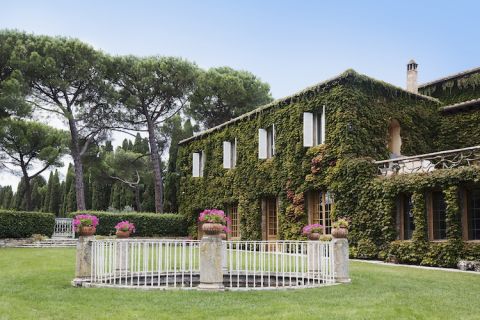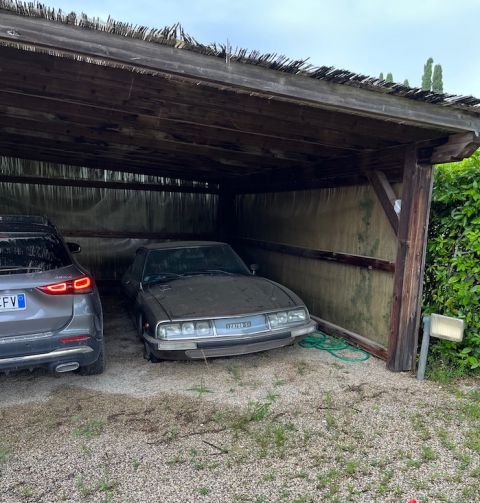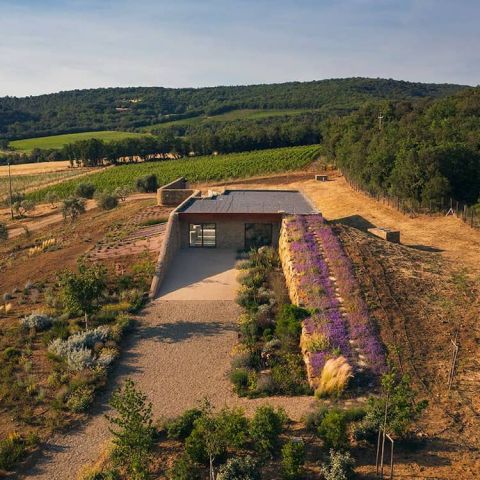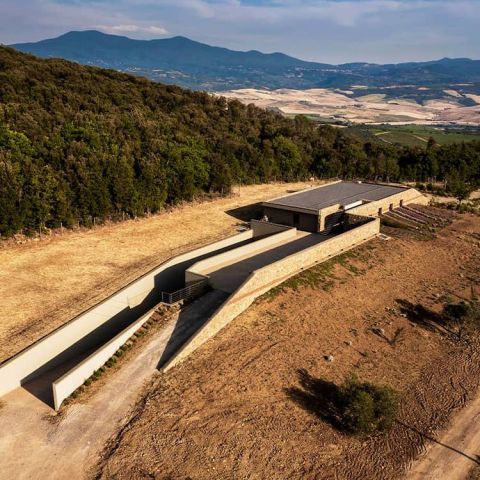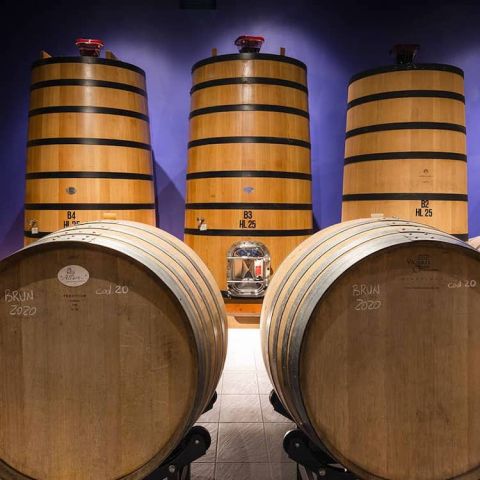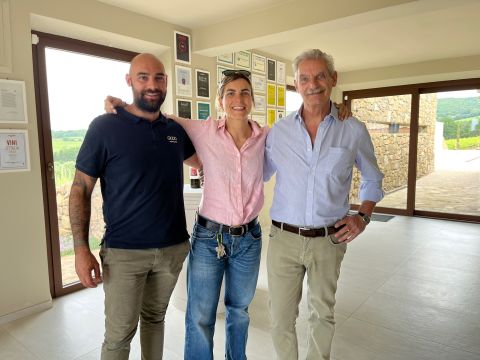A long history and an unparalleled reputation are not necessarily assets for new owners. When in 2017 it became clear that the private French group EPI, owners of Charles Heidsieck and Piper-Heidsieck champagnes, had acquired Montalcino’s most revered estate Il Greppo on the southern flank of the town, the close-knit Italian wine establishment held its breath. Along with Barolo, Brunello di Montalcino is Italy’s most famous wine and Ferruccio Biondi Santi of Il Greppo is seen as the late-19th-century founder and custodian of Brunello di Montalcino, made from carefully selected Sangiovese vines. His descendants continued the tradition until selling to EPI. What would the French do with this Tuscan treasure?
When Giampiero Bertolini, pictured above, was made CEO by EPI in 2018 he was fully aware that the spotlight was on him. He has continued to insist that any changes have been minuscule and entirely focused on quality, although the purchase of a new 6-ha (15-acre) vineyard in 2019, albeit with the same soil type and elevation as at Il Greppo, will have raised eyebrows.
But when I visited Il Greppo in June just after a long morning at a brand-new Montalcino estate, Giodo, it was not the vines but the winery that caught my attention. I couldn’t help contrasting the ease with which Giodo’s owners, Carlo Ferrini and his daughter Bianca, can operate with the constrictions at Il Greppo.
For a start the Biondi-Santi winery (the wine has a hyphen, the family not) is undeniably cramped. The new owners have had to buy a separate building to store the older vintages for which this producer is so famous. The current vintage of its straight ‘Annata’ Brunello di Montalcino is 2017, of its Riserva made from the oldest vines, the 2016, and from its stocks, which include two bottles of 1888 and three of 1891, it regularly releases exceptionally historic, or ‘Storica’, vintages, 1999 currently. (1888 and 1891 were two of only four vintages of Riserva released before the late 1940s. Now that’s how to add rarity value …) For tasting notes on several Storica vintages, see Tom Parker MW's Biondi-Santi – past, present, future.
The hand of history is evident everywhere, not least in the corner of the old winery where the desk of Ferruccio’s grandson Franco remains untouched, along with his jacket and deerstalker. Franco, in charge from 1971 until 2012, famously resisted the 1990s fashion for beefing up Brunello with French grapes and more ripeness, and continued to make Brunellos that need years in the bottle and then hours, perhaps days, in the glass to reveal themselves as delicate, exceptionally long-lived expressions of the Tuscan Sangiovese grape.
The winery is basically a back extension of the Biondi Santi family’s sixteenth-century villa (above), untouched in case Franco’s 94-year-old widow wishes to use it. An ancient, dusty Citroën SM sits in the garage, sinking into the weed-strewn gravel as its tyres deflate.
Compare and contrast with the Ferrinis’ spanking new, custom-built premises on the estate east of Sant’Angelo in Colle that they managed to buy in 2000 just before land prices in the Brunello di Montalcino zone soared. The spacious, beautiful and sustainably designed modern winery, carved into the hillside and gravity-fed, of course, lined with the indigo of Florence’s football team Fiorentina, is surrounded by freshly landscaped gardens designed to attract bees to its local flora. The flat roof with its views of the surrounding countryside is covered with solidified lava imported from Etna, where the Ferrinis also make wine. (Maybe hauling this from Sicily to Tuscany wasn’t all that sustainable?) Below, the new winery, as it was being constructed, and the brand-new interior.
During his 45 vintages, culminating in being feted as one of Italy’s most famous oenology consultants, Ferrini had time to work out the ideal design for a new winery and as a result says that winemaking in these premises, ready for the 2020 vintage, is banalissimo, meaning extremely straightforward. He has been reducing his client roster to a mere 30 in order to concentrate, with his former-water-polo-champion daughter and her winemaker partner Riccardo Ferrari (left, below), on this personal venture.
They make two wines here, Giodo Brunello and La Quinta (their ‘baby Brunello’), another 100% Sangiovese but from their younger vines. They had to plant their 6 ha (15 acres) of vines, whose age currently varies between five and 20 years old. (One of Ferrini’s first jobs, when he was working for the Chianti Classico professional association, was to identify the best clones of Sangiovese.) The Ferrinis are free to make La Quinta as they please because it is sold simply as a Tuscan red, so they age it half in wood and half in the fashionable clay pots that the wine world now rather inaccurately calls amphorae. It is delicious.
Production of a wine as historic as Brunello di Montalcino, on the other hand, is tightly circumscribed. The minimum cask-ageing period has successively been reduced but is still quite a long 24 months. I wondered whether this requirement was appropriate for the relatively delicate Sangiovese grape in lighter vintages. Ferrini shrugged. ‘We don’t question it. We have three goals: elegance, elegance and elegance.’ It is La Quinta that seems to me a relative bargain.
Biondi-Santi's straight Brunello Annata (non-Riserva) sells for more than Giodo’s, and the Riserva bottlings for which the estate is so famous can cost thousands for old vintages. History costs.
Bertolini and his team are engaged on a parcel-by-parcel analysis of Il Greppo estate, aided by the ubiquitous Chilean terroir expert Pedro Parra, with a view to refining vine-growing and winemaking still further. Like so many wine estates, especially those growing Sangiovese, they are plagued by the vine trunk disease esca and are adopting Marco Simonit’s pruning techniques in an effort to minimise its predations.
This year’s exceptionally wet spring and early summer in Tuscany have exacerbated problems in the vineyard with almost jungle-like growth, and inconvenient mud underfoot. Ferrini has adopted the technique of weaving all these shoots onto the top wire rather than trimming them, which he claims involves less ‘trauma’ and discourages the vine from growing yet more shoots. Both establishments are suffering from the current shortage of vineyard labour, an especially acute problem in Montalcino, which is far from any big city.
We toured Il Greppo’s vines under umbrellas and saw the vine nursery that the new regime has been developing on what was Franco Biondi Santi’s son Jacopo’s tennis court. Their researches suggest that the famous clone of Sangiovese isolated by Ferruccio and now known as BBS11 (Brunello Biondi Santi from row 11 in the vineyard) is well suited only to certain parcels of their 33 ha (82 acres) of vines, of which 26 are old enough to produce wine. I was given a tasting of wine from six different parcels over the last three vintages, which certainly demonstrated huge differences between them. But the new team say they have no intention of following the current fashion in Montalcino to release single-vineyard bottlings.
They would surely be crazy to do such an anti-Ferruccio thing.
Great Brunellos and baby Brunellos
Biondi-Santi 2020 Rosso di Montalcino 13.5%
£84.95 Shelved Wine, £85 Mother Vine
Biondi-Santi 2017 Brunello di Montalcino 13.5%
£188.01 Lay & Wheeler, £204.06 Shelved Wine
Biondi-Santi Riserva 2016 Brunello di Montalcino 14%
£644.67 Petersham Cellar
Biondi-Santi Riserva Storica 1997 Brunello di Montalcino 14%
£606 Hedonism
Biondi-Santi Riserva Storica 1985 Brunello di Montalcino 13%
£999 in bond Cru World Wine
Giodo, La Quinta 2021 IGT Toscana 14%
£42.12 XtraWine, £45.71 Vinatis, £47.50 Lea & Sandeman
Giodo, La Quinta 2020 IGT Toscana 14%
£40.15 Spirits 24, £42.12 XtraWine, £45.95 Lea & Sandeman
Giodo, La Quinta 2019 IGT Toscana 14%
£44.95 Lea & Sandeman
Giodo 2018 Brunello di Montalcino 14%
£128.54 Vinatis, £122.04 XtraWine
Giodo 2016 Brunello di Montalcino 14%
£117.50 Berry Bros & Rudd
Giodo 2015 Brunello di Montalcino 14%
£120 Salusbury Winestore
It's also worth checking the in bond and discounted case prices offered by Lea & Sandeman, Giodo’s principal importer into the UK.
For tasting notes, scores and suggested drink dates, see our tasting notes database. For international stockists, see Wine-Searcher.com.


